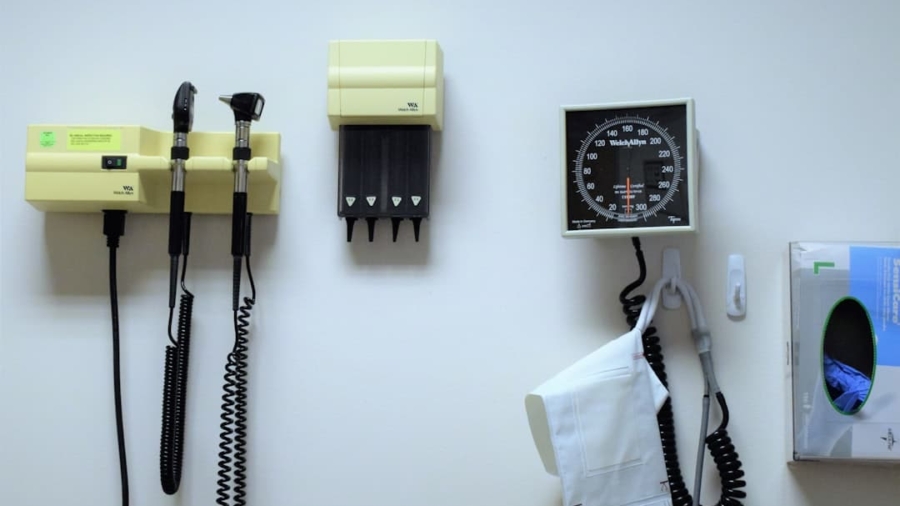The advent of 5G networks marks a significant leap in telecommunications technology, promising to revolutionize various sectors, including healthcare. With its unparalleled speed, low latency, and capacity to connect a multitude of devices simultaneously, 5G is poised to transform how healthcare services are delivered. The integration of 5G into healthcare systems is not merely an enhancement; it represents a paradigm shift that can lead to improved patient outcomes, more efficient healthcare delivery, and innovative medical practices.
As healthcare systems worldwide grapple with increasing demands and the need for more efficient service delivery, the potential of 5G networks becomes increasingly apparent. In the context of healthcare, 5G networks facilitate real-time data transmission, enabling healthcare professionals to make informed decisions swiftly. This capability is particularly crucial in emergency situations where every second counts.
Moreover, the ability to connect a vast array of devices—from medical imaging equipment to wearable health monitors—creates an ecosystem where data can flow seamlessly between patients and providers. As we delve deeper into the advantages and applications of 5G in healthcare, it becomes clear that this technology is not just about faster internet; it is about creating a more connected, responsive, and patient-centered healthcare system.
Key Takeaways
- 5G networks enhance healthcare by enabling faster, more reliable connectivity for medical applications.
- Telemedicine and remote patient monitoring benefit from 5G’s low latency and high bandwidth.
- 5G supports advanced medical devices and wearables, improving real-time health data collection.
- Data security and privacy remain critical concerns with the increased connectivity of 5G healthcare systems.
- Integration of 5G with AI promises smarter, more efficient healthcare but faces implementation challenges.
Advantages of 5G Networks in Healthcare
One of the most significant advantages of 5G networks in healthcare is their ability to support high-speed data transfer. Traditional 4G networks often struggle with bandwidth limitations, especially in densely populated areas or during peak usage times. In contrast, 5G networks can handle massive amounts of data simultaneously without compromising speed or quality.
This capability is particularly beneficial for applications such as telemedicine, where high-definition video consultations require stable and fast connections. The enhanced bandwidth allows for smoother interactions between patients and healthcare providers, reducing the likelihood of interruptions that could hinder effective communication. Another critical advantage of 5G technology is its ultra-reliable low-latency communication (URLLC).
This feature is essential for applications that require real-time feedback, such as remote surgeries or robotic-assisted procedures. Surgeons can operate on patients from miles away using robotic systems that rely on instantaneous data transmission. The low latency of 5G ensures that there is minimal delay between the surgeon’s commands and the robot’s actions, which is vital for maintaining precision and safety during complex procedures.
Furthermore, this capability extends beyond surgical applications; it can also enhance emergency response systems by allowing first responders to access real-time data about a patient’s condition while en route to a medical facility.
Telemedicine and Remote Patient Monitoring

Telemedicine has gained significant traction in recent years, particularly accelerated by the COVID-19 pandemic.
With 5G’s high-speed connectivity, patients can engage in high-definition video consultations with their healthcare providers without experiencing lag or interruptions.
This improvement not only enhances the patient experience but also allows for more accurate assessments by physicians who can observe patients in real-time. For instance, dermatologists can evaluate skin conditions more effectively through high-resolution video feeds, leading to better diagnostic accuracy. Remote patient monitoring (RPM) is another area where 5G networks can make a substantial impact.
With the ability to connect various medical devices and wearables seamlessly, healthcare providers can monitor patients’ vital signs continuously and in real-time. For example, patients with chronic conditions such as diabetes or heart disease can wear devices that transmit data directly to their healthcare teams. This constant flow of information enables timely interventions when abnormalities are detected, potentially preventing complications and hospitalizations.
The combination of telemedicine and RPM powered by 5G creates a comprehensive approach to patient care that emphasizes prevention and proactive management.
5G-enabled Medical Devices and Wearables
The proliferation of medical devices and wearables equipped with 5G capabilities is set to redefine patient care and monitoring. These devices can collect vast amounts of health data, from heart rate and blood pressure to glucose levels and oxygen saturation. The real-time transmission of this data allows healthcare providers to analyze trends and make informed decisions about treatment plans.
For instance, smart insulin pens that communicate with mobile applications can help diabetic patients manage their condition more effectively by providing real-time feedback on their blood sugar levels and insulin dosages. Moreover, the integration of 5G technology into medical devices enhances their functionality and interoperability. Devices such as smart inhalers or connected pacemakers can share data with electronic health records (EHRs) seamlessly, ensuring that healthcare providers have access to the most current information about their patients’ health status.
This connectivity not only improves clinical decision-making but also fosters a more collaborative approach to patient care. For example, if a patient’s pacemaker detects irregular heart rhythms, it can alert both the patient and their healthcare provider immediately, allowing for prompt intervention.
Data Security and Privacy in 5G Healthcare
As healthcare increasingly relies on digital technologies and interconnected devices, data security and privacy become paramount concerns. The implementation of 5G networks introduces new vulnerabilities that must be addressed to protect sensitive patient information. With the ability to connect millions of devices simultaneously, the potential for cyberattacks increases significantly.
Healthcare organizations must prioritize robust cybersecurity measures to safeguard against breaches that could compromise patient data. Encryption plays a crucial role in securing data transmitted over 5G networks. By employing advanced encryption protocols, healthcare providers can ensure that sensitive information remains confidential during transmission.
Additionally, implementing multi-factor authentication for accessing medical devices and patient records adds an extra layer of security. Regulatory frameworks such as HIPAA (Health Insurance Portability and Accountability Act) in the United States provide guidelines for protecting patient information, but as technology evolves, so too must these regulations to address emerging threats in the digital landscape.
5G Networks and Artificial Intelligence in Healthcare

The synergy between 5G networks and artificial intelligence (AI) has the potential to revolutionize healthcare delivery further.
For instance, AI-powered diagnostic tools can process imaging data from MRIs or CT scans much faster than human radiologists, identifying anomalies with remarkable accuracy.
When combined with the high-speed connectivity of 5G, these tools can deliver results almost instantaneously, allowing for quicker diagnoses and treatment plans. Moreover, AI can play a pivotal role in predictive analytics within healthcare systems powered by 5G technology. By analyzing historical patient data alongside real-time information from connected devices, AI algorithms can identify patterns that may indicate potential health risks.
For example, predictive models could alert healthcare providers about patients at risk of developing complications from chronic conditions based on their current health metrics. This proactive approach enables timely interventions that can significantly improve patient outcomes while reducing overall healthcare costs.
Challenges and Barriers to Implementing 5G in Healthcare
Despite the numerous advantages that 5G networks offer to the healthcare sector, several challenges hinder their widespread implementation. One significant barrier is the high cost associated with deploying 5G infrastructure. Healthcare organizations must invest in upgrading their existing systems and acquiring new technologies compatible with 5G capabilities.
This financial burden can be particularly challenging for smaller practices or rural healthcare facilities that may already be operating on tight budgets. Additionally, regulatory hurdles pose another challenge to the adoption of 5G in healthcare. The rapid pace of technological advancement often outstrips existing regulations designed to protect patient safety and privacy.
Policymakers must work collaboratively with healthcare stakeholders to develop frameworks that address the unique challenges posed by 5G technology while ensuring patient safety remains a top priority. Furthermore, there is a need for comprehensive training programs for healthcare professionals to familiarize them with new technologies and ensure they are equipped to leverage the full potential of 5G networks.
The Future of Smart Healthcare: 5G and Beyond
Looking ahead, the future of smart healthcare powered by 5G networks appears promising yet complex. As technology continues to evolve, we can expect even more innovative applications that enhance patient care and streamline healthcare delivery processes. The integration of Internet of Things (IoT) devices with 5G will create an interconnected ecosystem where everything from hospital equipment to personal health monitors communicates seamlessly.
This interconnectedness will enable a holistic view of patient health, allowing for more personalized treatment plans tailored to individual needs. Moreover, as artificial intelligence continues to advance alongside 5G technology, we may witness breakthroughs in areas such as drug discovery and genomics. AI algorithms could analyze genetic data at unprecedented speeds, leading to more effective treatments tailored to specific genetic profiles.
The combination of these technologies has the potential to usher in an era of precision medicine where treatments are customized based on individual characteristics rather than a one-size-fits-all approach. In conclusion, while challenges remain in implementing 5G networks within healthcare systems, the potential benefits are immense. As stakeholders work collaboratively to address these challenges, we stand on the brink of a new era in healthcare—one characterized by enhanced connectivity, improved patient outcomes, and innovative solutions that leverage the power of technology for better health management.
The integration of 5G networks into healthcare systems is poised to revolutionize patient care and medical services, as discussed in the article “The Future of Smart Healthcare Through 5G Networks.” For those interested in exploring how technology influences various sectors, you might find the article on how to choose a smartphone for executives particularly relevant, as it highlights the importance of advanced technology in enhancing productivity and decision-making. You can read more about it here: How to Choose Smartphone for Chief Executive.
FAQs
What is 5G technology and how does it relate to smart healthcare?
5G technology is the fifth generation of wireless communication networks, offering significantly faster data speeds, lower latency, and greater connectivity compared to previous generations. In smart healthcare, 5G enables real-time data transmission, remote monitoring, and enhanced telemedicine services, improving patient care and operational efficiency.
How does 5G improve remote patient monitoring?
5G’s high-speed and low-latency connectivity allows medical devices to transmit patient data continuously and in real-time. This enables healthcare providers to monitor vital signs remotely, detect anomalies quickly, and intervene promptly, reducing hospital visits and improving patient outcomes.
What role does 5G play in telemedicine?
5G enhances telemedicine by providing reliable, high-quality video and audio connections, enabling seamless virtual consultations between patients and healthcare professionals. It supports the use of advanced diagnostic tools and real-time data sharing, making remote diagnosis and treatment more effective.
Can 5G support the use of AI and IoT in healthcare?
Yes, 5G networks can handle the large volumes of data generated by AI algorithms and Internet of Things (IoT) medical devices. This connectivity facilitates faster data processing, improved decision-making, and the integration of smart devices for personalized healthcare solutions.
What are the potential benefits of 5G-enabled smart healthcare?
Benefits include improved patient monitoring, faster emergency response, enhanced telemedicine services, better management of chronic diseases, reduced healthcare costs, and increased accessibility to medical care, especially in remote or underserved areas.
Are there any challenges associated with implementing 5G in healthcare?
Challenges include the need for significant infrastructure investment, ensuring data security and patient privacy, managing network reliability, and addressing regulatory and interoperability issues between different healthcare systems and devices.
How soon can we expect widespread adoption of 5G in healthcare?
Adoption timelines vary by region and healthcare system readiness. Some applications are already in use, while broader implementation depends on infrastructure development, regulatory approvals, and integration with existing healthcare technologies over the next several years.
Is 5G safe for use in healthcare environments?
Current research indicates that 5G technology is safe for use in healthcare settings. Regulatory bodies monitor and set exposure limits to ensure that 5G networks comply with health and safety standards. However, ongoing studies continue to assess long-term effects.

